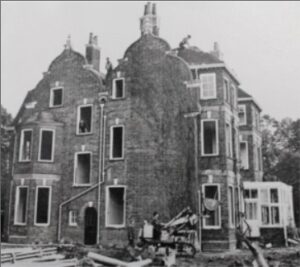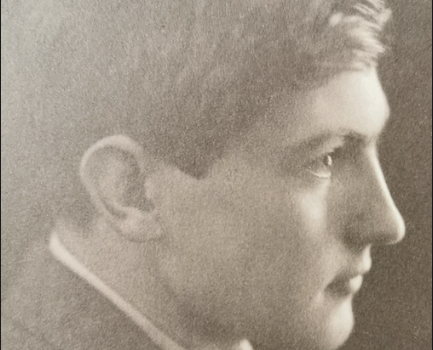Magdalene College has recently made public the letters of George and Ruth Mallory. George Mallory was an English mountaineer who was part of the first three British Mt Everest expeditions. A digitised version is accessible for free on the college website and will be of great interest to Cambridge residents as Mallory’s last family house was in Cambridge, in Herschel Road, having been purchased a few months before George’s last expedition.
George and his climbing partner, Andrew Irving, disappeared in June of 1924 on the slopes of Mt Everest. They were last seen alive 800ft from the summit and it will never be known whether they reached the top. It was only in 1999 that Mallory’s body was actually retrieved. Some questions about their ill-fated expedition were answered; many remain to this day.

Cambridge had an important place in George’s life. This is where he spent his formative years at Magdalene College and where he last said good-bye to his wife and children. As a student, George spent considerable amount of time at 8 Trumpington Street, the house of Charles Sayle, an under librarian at Cambridge University Library and a patron of social and intellectual life at the time. Rupert Brooke and the Keynes brothers were seen there too. This is where George socialised and explored many aspects of life including reflecting on the fluidity of his own sexuality. He also formed a very close relationship with Arthur Benson who invited him to stay at his mansion Hinton Hall in the fens at Haddenham and took him around the Cambridgeshire countryside in his car.
The letters released by Magdalene College include letters written by George and Ruth to each other during WW1 and are of great interest as the letters of Ruth give a fresh perspective on the domestic and emotional endured by women during the war. History is seldom written by women or through women’s eyes and the letters are, as commented by Katy Green, archivist at Magdalene College, an important source for the social history of women during WW1.
From a Cambridge point of view, Ruth’s letter dated 3 March 1924 gives us an interesting insight into the cultural life of Cambridge in the early 20s with an account of an evening spent watching a Greek play of which no-one really understood a word. George was back in India by then, preparing his next expedition. The letter discusses the financial position of the family; both Ruth’s and George’s accounts are overdrawn and Ruth is left to deal with these worries. Her frustration with her ever absent husband is clear when she admits being ‘cross’ and ‘not nice’ when he is home. The letters show the other side of the story and the sacrifices endured by George’s wife and children – a story often forgotten. (Dr N Henry)
Find out more about George Mallory and his connection with Cambridge:
http://www.magd.cam.ac.uk/events/george-mallory-magdalene-to-the-mountain
https://capturingcambridge.org/newnham/herschel-road/herschel-house-herschel-road/
The Wildest Dream, George Mallory: The Biography of an Everest Hero, Peter and lent Gillman, 2000
